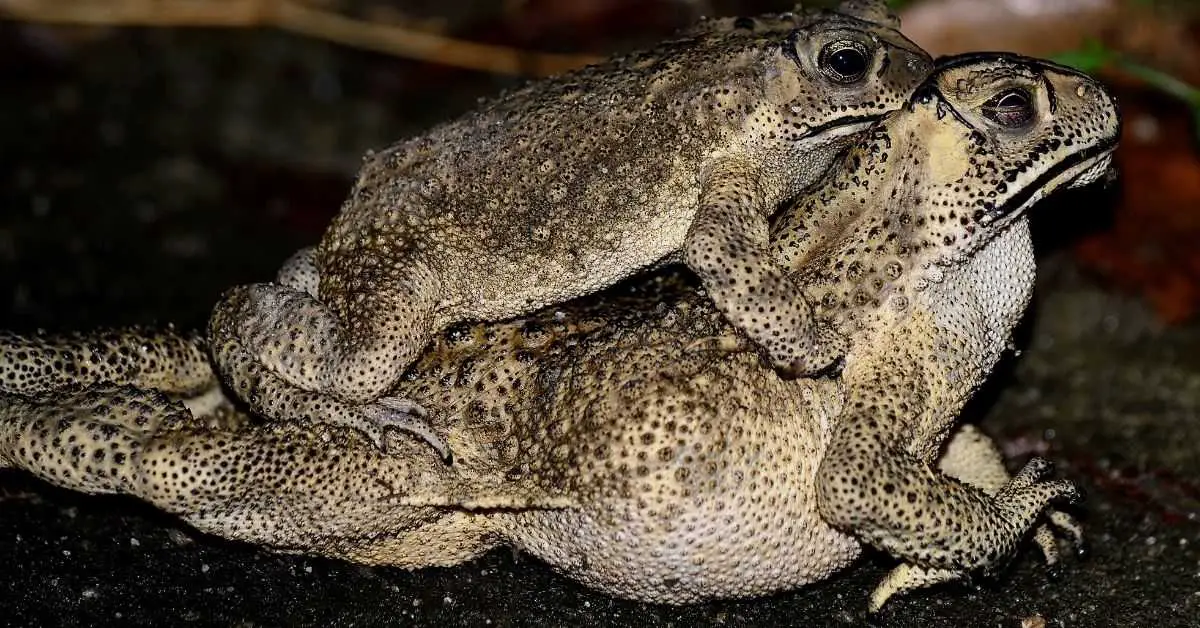Female Frogs: Playing Dead to Avoid Sex
Female frogs have developed a unique survival tactic in the animal kingdom – playing dead to avoid sex. This behavior is shaped by years of evolution, environmental factors, and adaptive necessities. Female frogs‘ reproductive strategies illustrate a complex interplay between biological instinct and survival tactics.
The Challenges of Mating Seasons
During mating seasons, female frogs face relentless pursuits from males. These interactions can be challenging for the females as they need to manage these advances without compromising their well-being due to excessive mating activities. Their approach is less about random evasion and more about strategic engagement, indicating a strong survival mechanism at play.
Studying these behaviors is crucial as they reveal a lot about animal behavior, survival, and ecology. Additionally, they provide insights into the effects of habitat and climate changes on different species. Researchers must examine whether frogs can adapt to new environments and if their survival strategies are still viable. This knowledge is vital for environmental conservation efforts.
This understanding is not just academic; it has significant implications for biodiversity and ecosystem health. By studying how female frogs handle mating challenges, we gain a broader picture of environmental harmony and the survival challenges many species face today.
The Fascinating Mating Game
Frogs have one of the most fascinating mating rituals in the animal kingdom. The mating process begins with male frogs‘ croaking to attract their female counterparts. These calls serve not only as attractants but also as a deterrent to competing males. Among these dynamics, the female’s feigned death stands out as a clever survival tactic. The symphony of calls in wetlands indicates that the mating season is in full swing.
In this season, female frogs face substantial challenges. The primary dilemma is the incessant attention from multiple potential mates, leading to a relentless biological courtship. Female frogs expend a lot of energy avoiding unsuitable mates and evaluating potential partners‘ suitability. This behavior is far from a simple preference; it’s vital for the future generation’s health, genetic diversity, and survival chances.
Entdecke spannende Einblicke in die Welt der Naturheilkunde auf unserem neuen Instagram-Kanal! Folge @wiki.natur für aktuelle Tipps, inspirierende Beiträge und Expertenwissen rund um natürliche Heilmethoden. Bleib immer auf dem neuesten Stand – wir freuen uns auf dich!
Zum Instagram-KanalMoreover, the constant physical handling by multiple males can be taxing, sometimes leading to exhaustion or physical harm. The pressure mounts with the need to find suitable egg-laying environments, often necessitating travel across distances, which further drains their energy reserves.
The selectiveness of female frogs is deliberate and serves an essential purpose in natural selection, contributing to the inheritance of advantageous survival traits. However, the mating season is strenuous for them as they evaluate mates, manage physical demands, all while ensuring the long-term survival of their offspring.
Ingenious Strategies of Female Frogs
Female frogs have developed ingenious strategies to manage the intensity of the mating season. These methods are practical, energy-efficient, and vital for ensuring the best possible advantages for their offspring.
Selective Responsiveness
Female frogs exhibit a behavior known as „selective responsiveness,“ filtering out the calls of less desirable males. They are finely attuned to certain frequencies or patterns in males‘ calls, indicative of their size, fitness, or energy level. By being choosy, female frogs conserve energy and increase the likelihood of selecting a mate with a strong genetic makeup, enhancing the survival odds of their offspring.
The Art of Camouflage
Female frogs use their surroundings to their advantage, hiding among vegetation, underwater, or blending into the mud. This natural camouflage helps them manage male advances, especially from aggressive or undesirable suitors, saving their energy for more favorable opportunities.
Physical Evasion Techniques
When stealth isn’t enough, female frogs use their robust legs to leap away quickly or swim deftly out of reach to evade unsuitable mates. These physical maneuvers, though energy-consuming, are crucial to avoid overwhelming advances or when they are ready to end the mating process.
Release Calls
Female frogs employ release calls when a male has grasped them, signaling disinterest. Some release calls startle the unwanted mate, causing him to loosen his grip, providing the female with a chance to escape.
The Science Behind the Behavior: How Female Frogs Play Dead to Avoid Sex
Scientific research sheds light on the adaptive behaviors of female frogs during mating and the intriguing strategy of playing dead to avoid sex. Playing dead is an extreme but effective strategy driven by evolution to secure the best genes for offspring survival.
Female frogs playing dead to avoid mating is observed in some species as a survival strategy. Here’s an overview of the science behind this behavior:
Male Persistence: Male frogs can be persistent when it comes to mating, even continuing their attempts after the female has already mated. This persistent behavior can be energetically costly for the female.
Energy Conservation: Playing dead can be an energy-saving strategy for female frogs. Mating and laying eggs require a significant amount of energy, so by pretending to be dead, females can conserve energy for more critical activities like foraging and maintaining their overall health.
Avoiding Harassment: Females may use playing dead as a defense against aggressive or persistent males. By appearing lifeless, they may deter males from continuing their advances.
Reducing the Risk of Injury: Some male frogs can be forceful during mating attempts, potentially injuring the female. Playing dead helps the female avoid such harm by convincing the male that she is not a suitable mate.
Predator Avoidance: Playing dead also serves as a defense mechanism against potential predators. Predators are less likely to target a motionless frog, assuming it is either dead or unpalatable.
Broader Environmental Implications
The mating strategies of female frogs are interconnected with larger ecological systems and biodiversity. These adaptive tactics have ripple effects on population dynamics, predator-prey relationships, and habitat structures.
Selective responsiveness contributes to genetic diversity within frog populations, promoting resilience to diseases and environmental changes, critical for healthy ecosystems.
However, these natural behaviors face disruptions from various environmental changes such as climate change, pollution, and habitat destruction. It is essential to understand and protect these behaviors to ensure the long-term survival of species and maintain healthy ecosystems.




